15 New Mexico Spots That Echo With Heritage
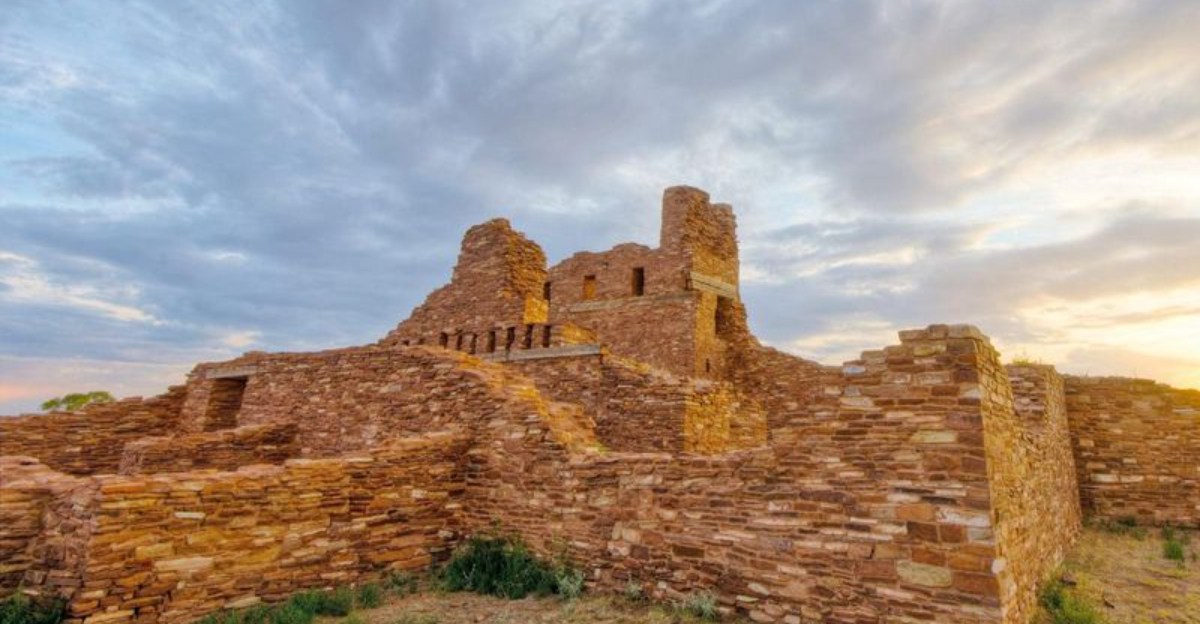
What if you could time-travel just by stepping outside? In New Mexico, history isn’t kept behind glass—it lives in the pueblos, missions, and quiet desert landscapes that have witnessed centuries of life.
This state is more than stunning views and spicy green chile; it’s a place where cultures collided, blended, and left their mark in the earth itself. Ever wondered what it feels like to stand in a 1,000-year-old village still inhabited today? Or walk the same dusty paths that traders and missionaries once took across the high desert?
From the sacred kivas of Taos Pueblo to the adobe elegance of Santa Fe’s old plaza, every site tells a layered story. It’s not just about seeing ruins—it’s about feeling the heartbeat of a region that’s never stopped evolving. Ready to explore the soul of the Southwest?
1. Taos Pueblo
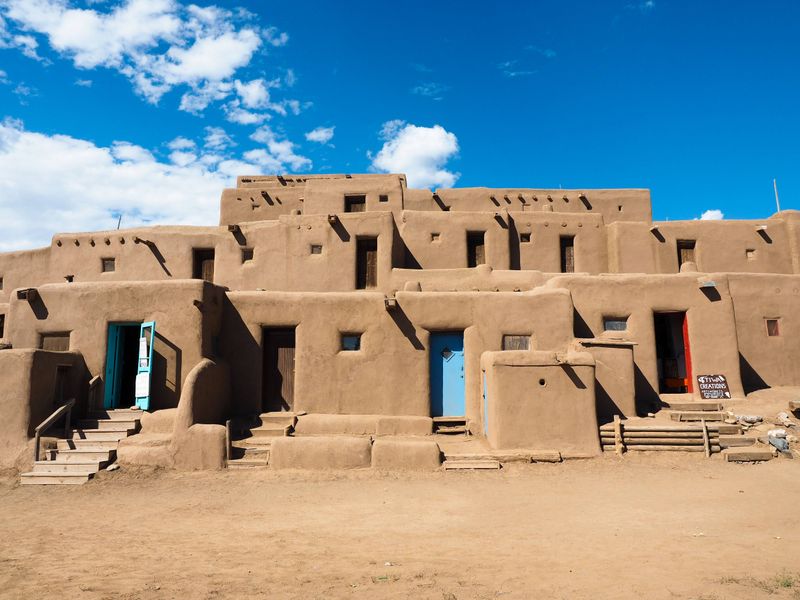
Standing for over 1,000 years, these adobe buildings represent one of America’s oldest continuously inhabited communities. Families still live here today, maintaining traditions passed down through countless generations.
When you visit, you’ll notice the thick walls and flat roofs designed to withstand harsh mountain winters. The absence of electricity and running water keeps life simple and connected to ancestral ways.
Photography requires permission and respect for privacy. The pueblo closes during certain ceremonies, honoring sacred traditions that remain vibrant and meaningful to residents.
2. Palace of the Governors
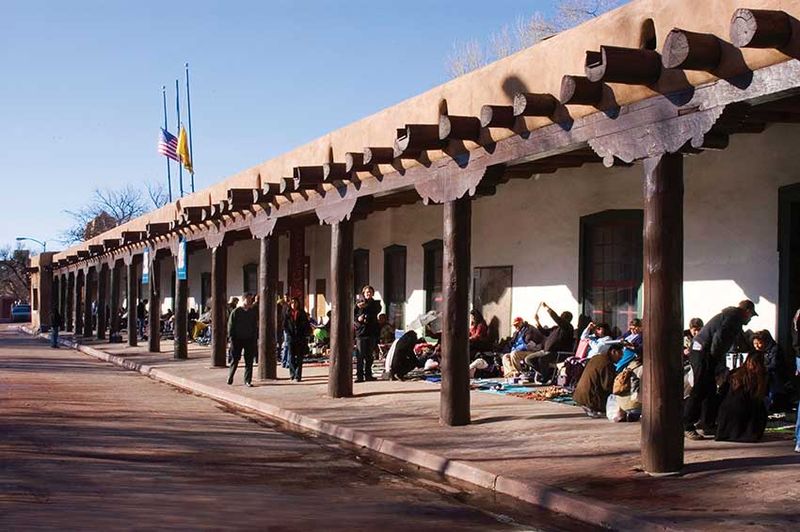
Built in 1610, this low-slung adobe structure served as the seat of government for Spanish, Mexican, and American territories. Its covered walkway has sheltered political meetings, military planning, and countless daily conversations.
Today, Native American artisans spread blankets beneath its portal, selling handmade jewelry and pottery. This tradition connects modern visitors to centuries of trade and cultural exchange.
Inside, museum exhibits reveal layers of political history. Documents, artifacts, and interactive displays show how different cultures shaped New Mexico’s unique identity over four centuries.
3. Bandelier National Monument
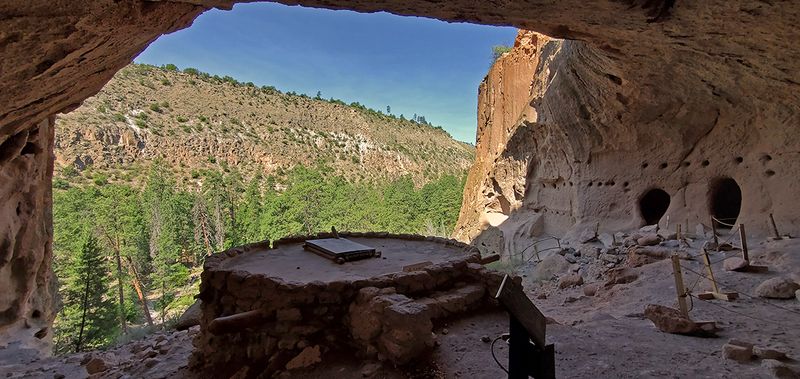
Carved into volcanic cliffs, these ancestral Puebloan homes showcase remarkable engineering skills from 600 years ago. Families lived in these cave dwellings, farming the canyon floor below while staying protected from weather and enemies.
Hiking the Main Loop Trail takes you past petroglyphs and reconstructed structures. Wooden ladders let you climb into actual cave rooms where people once slept, cooked, and raised children.
The visitor center explains how these communities thrived before mysteriously abandoning the area. Archaeological evidence suggests drought and resource depletion forced residents to relocate to the Rio Grande valley.
4. San Miguel Mission
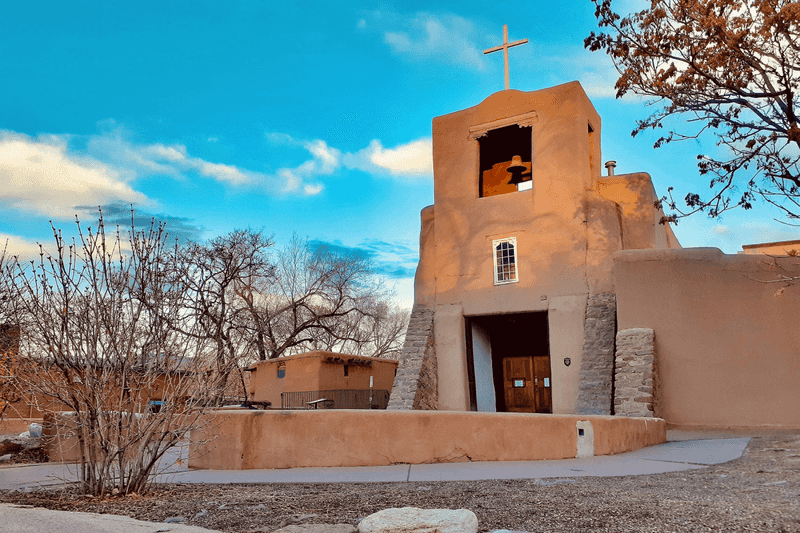
Completed around 1610, this humble stone chapel claims the title of America’s oldest church structure still in use. Spanish soldiers and Tlaxcalan Indians built these thick walls to withstand both time and conflict.
The simple interior features hand-carved wooden beams and religious artifacts spanning four centuries. A small bell tower houses bells cast in Spain, their bronze voices still calling faithful to worship.
Despite damage from the 1680 Pueblo Revolt, the mission survived and continues serving Santa Fe’s community. Mass is still celebrated here, connecting modern worshippers to centuries of prayer and devotion.
5. Acoma Pueblo Sky City
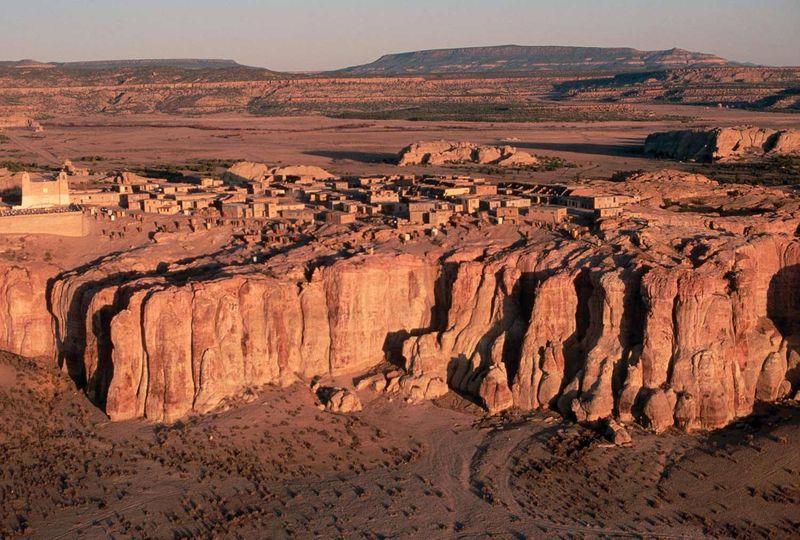
Perched 367 feet above the desert floor, this mesa-top village has been continuously inhabited for over 800 years. The dramatic location provided natural defense while offering spectacular views across the high desert landscape.
Traditional adobe homes cluster around a central plaza where ceremonies and daily life unfold. Many families maintain residences here while also living in modern communities below the mesa.
Guided tours led by tribal members share stories of survival, tradition, and adaptation. The pottery made here features distinctive geometric patterns that have remained unchanged for generations, representing one of America’s finest ceramic traditions.
6. Chaco Culture National Historical Park
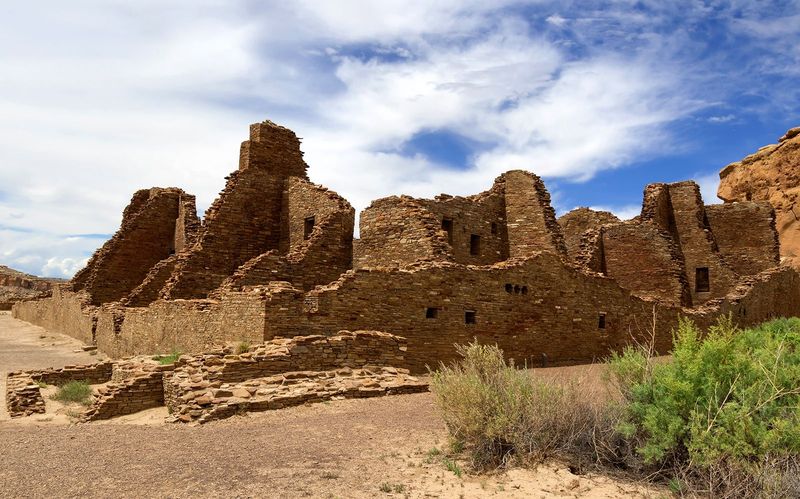
Between 850 and 1150 CE, this remote canyon hosted one of North America’s most sophisticated civilizations. Massive stone buildings like Pueblo Bonito contained hundreds of rooms and served as centers for trade, ceremony, and astronomy.
The precision of Chacoan architecture amazes modern engineers. Walls align with celestial events, roads stretch for miles in perfectly straight lines, and construction techniques created structures that still stand after 1,000 years.
Remote location means fewer crowds but requires planning. The bumpy dirt road and lack of services make this a true pilgrimage to one of humanity’s most remarkable achievements in the American Southwest.
7. El Rancho de las Golondrinas
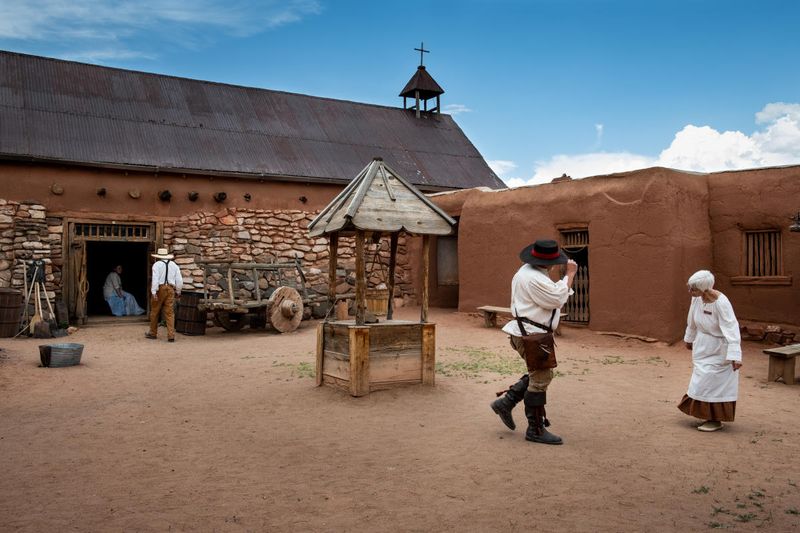
This living history museum recreates life on an 18th-century Spanish colonial ranch. Original buildings and period reproductions show how families lived, worked, and survived on New Mexico’s frontier.
Costumed interpreters demonstrate blacksmithing, weaving, and farming techniques used by Hispanic settlers. Weekend festivals feature traditional music, dance, and food that bring colonial culture to vivid life.
The ranch served as a paraje, or stopping place, along the Camino Real trade route. Travelers between Mexico City and Santa Fe rested here, creating a crossroads of cultures, languages, and traditions that shaped New Mexico’s unique heritage.
8. Pecos National Historical Park
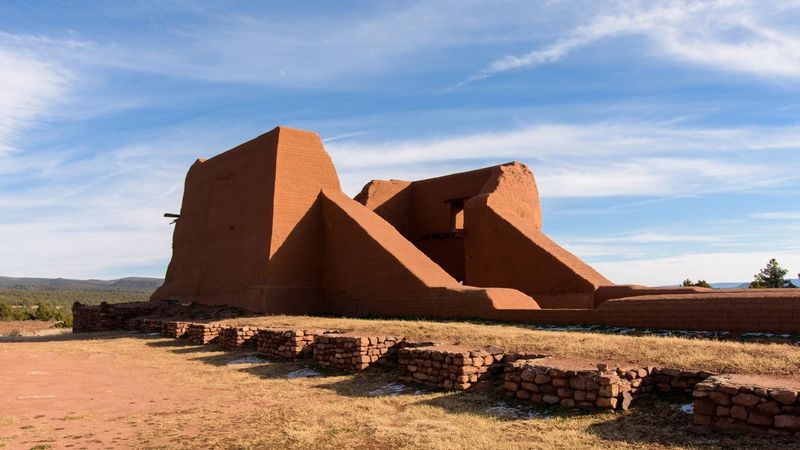
Where ancient pueblo meets Spanish mission, this site tells the complex story of cultural collision and adaptation. The massive pueblo once housed 2,000 people and served as a major trading center between Plains and Pueblo peoples.
Spanish missionaries built a church here in the 1620s, creating tension between Catholic and traditional beliefs. The ruins of both structures stand side by side, representing centuries of cultural negotiation and change.
Walking trails connect different time periods, from prehistoric settlements to Civil War battlefields. Each layer reveals how different groups shaped this strategic location along important trade routes connecting diverse cultures and economies.
9. Coronado Historic Site
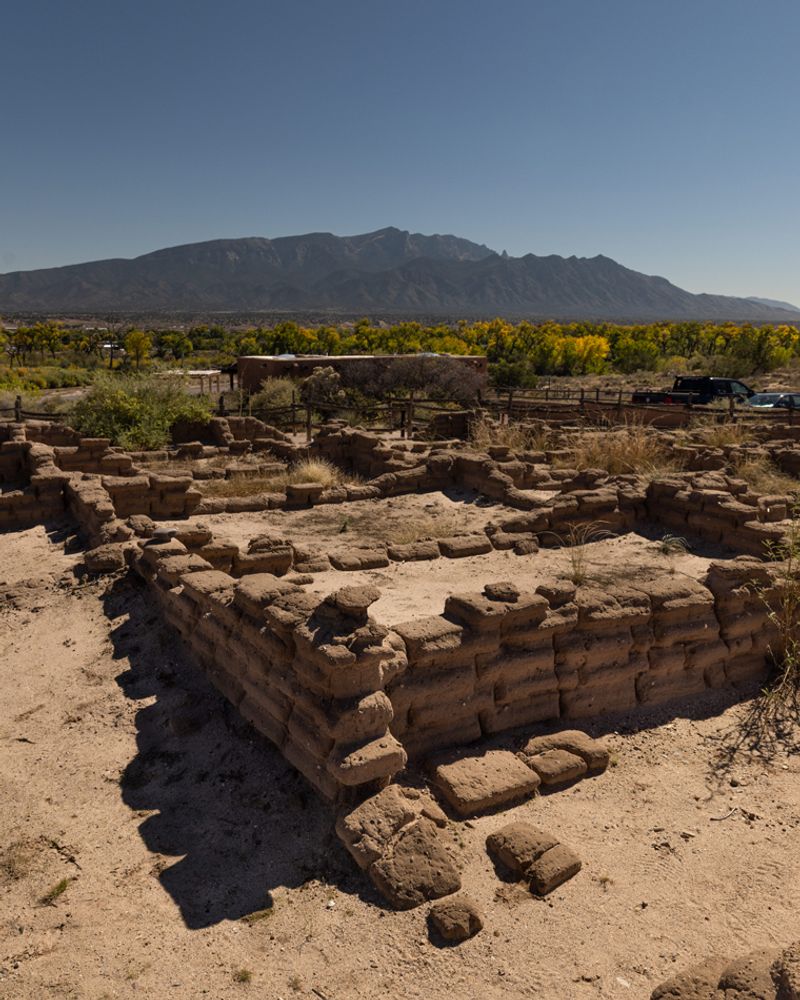
Named for Spanish explorer Francisco Coronado, this site preserves Kuaua Pueblo, where Europeans first encountered Rio Grande valley peoples in 1540. The meeting changed both cultures forever, beginning centuries of complex relationships.
A reconstructed kiva displays remarkable murals painted by pueblo artists 500 years ago. These colorful images show ceremonies, animals, and spiritual beings that connected people to their natural and supernatural worlds.
The visitor center explains how Coronado’s expedition affected indigenous communities. Interactive exhibits help visitors understand multiple perspectives on this pivotal moment when two worlds collided along the Rio Grande.
10. Jemez Historic Site
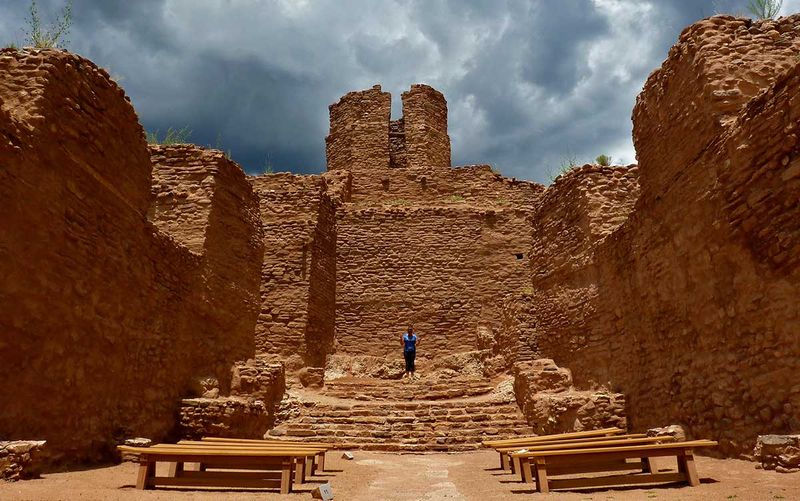
Hidden in a mountain valley, these ruins tell the story of Giusewa Pueblo and the Spanish mission built among its homes. The 17th-century church represents both cultural exchange and the challenges of religious conversion.
Massive stone walls of San José de los Jémez mission still stand, showing the ambition of Spanish missionaries. The pueblo ruins reveal how indigenous people adapted their traditional architecture to accommodate new religious practices.
The site closed after the 1680 Pueblo Revolt, when indigenous peoples across New Mexico coordinated resistance against Spanish rule. Today, descendants of Giusewa live at modern Jemez Pueblo, maintaining connections to this ancestral homeland.
11. Fort Union National Monument

Built to protect Santa Fe Trail travelers, this frontier fort housed soldiers who guarded commerce between Missouri and Mexico. The massive ruins show the scale of military operations needed to secure this vital trade route.
Three different forts occupied this site between 1851 and 1891. The final version included a military depot, hospital, and quarters for hundreds of soldiers and their families living on the remote high plains.
Wagon ruts from the Santa Fe Trail still scar the prairie near the fort. These deep grooves remind visitors of countless merchants, settlers, and soldiers who passed this way, carrying goods, dreams, and cultural exchange across the American West.
12. Gila Cliff Dwellings National Monument

Built into natural caves high above a mountain canyon, these 13th-century homes showcase Mogollon culture’s adaptation to rugged terrain. Families lived in these cliff dwellings for only about 20 years before abandoning them mysteriously.
The one-mile trail to the dwellings winds through diverse ecosystems from desert to pine forest. This environmental variety provided residents with everything from cactus fruit to pine nuts, supporting a complex seasonal lifestyle.
Five caves contain about 40 rooms constructed with stone, timber, and mud mortar. The remarkable preservation allows visitors to see original roof beams, doorways, and wall construction techniques used by these skilled mountain builders.
13. Three Rivers Petroglyph Site
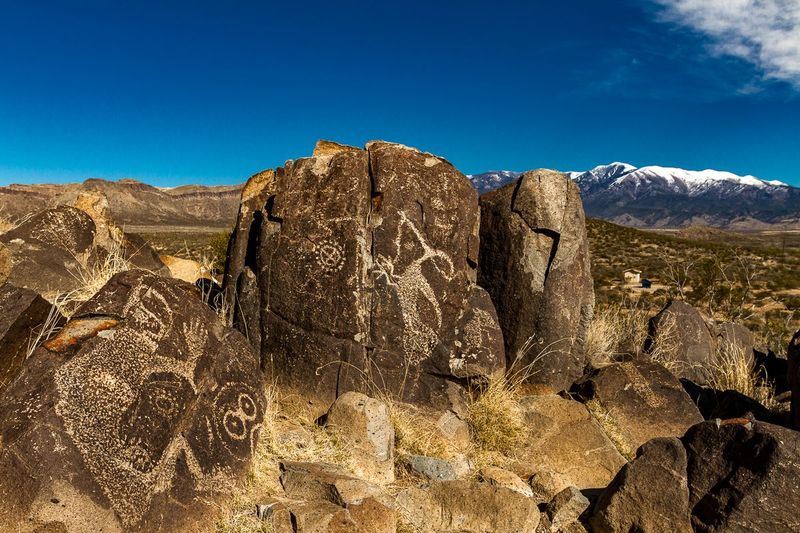
Over 21,000 petroglyphs cover dark basalt boulders at this remarkable outdoor art gallery. Created between 900 and 1600 CE, these images represent one of the largest collections of rock art in the Southwest.
The petroglyphs show animals, humans, geometric patterns, and mysterious symbols whose meanings remain debated. Some clearly represent local wildlife like bighorn sheep and birds, while others seem to record ceremonies or astronomical events.
A short trail leads among the boulder fields where ancient artists pecked images into dark rock surfaces. The contrast between black basalt and lighter underlying stone makes these thousand-year-old artworks clearly visible against the desert landscape.
14. La Cueva Historic Site
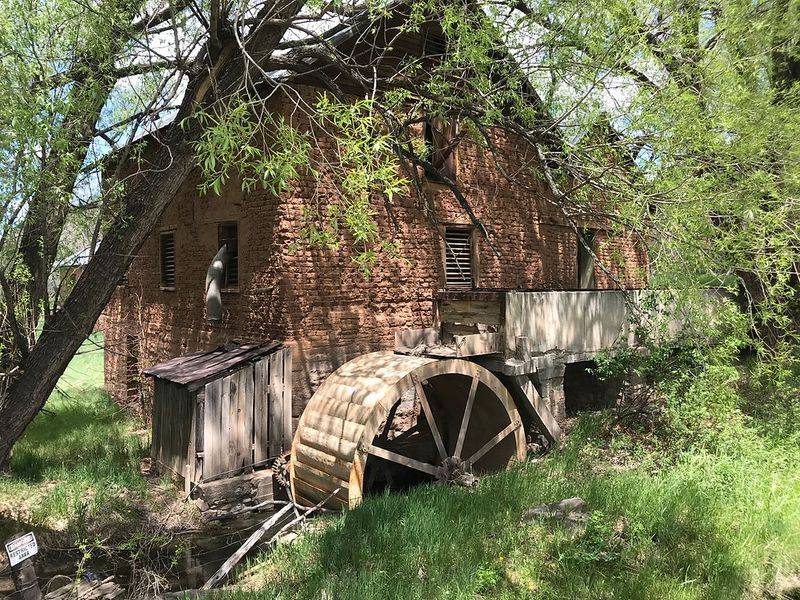
This 19th-century Hispanic village preserves the story of frontier commerce and community along the Santa Fe Trail. The stone gristmill, powered by acequia irrigation, ground grain for local families and passing travelers.
Vicente Romero built this settlement in the 1850s, creating a self-sufficient community with mill, store, and homes. The location along the Mora River provided water for irrigation and power for the mill’s grinding stones.
Today, the restored mill demonstrates traditional Hispanic farming and milling techniques. Guided tours explain how acequia systems brought water from mountain streams to valley farms, supporting communities that balanced tradition with frontier opportunities.
15. Salinas Pueblo Missions National Monument

Three separate sites preserve the remains of 17th-century Spanish missions built among thriving pueblo communities. These red sandstone churches represent the meeting of Catholic and Pueblo spiritual traditions in remote high desert locations.
Quarai, Abó, and Gran Quivira each tell slightly different stories of cultural contact, religious conversion, and eventual abandonment. The massive church walls built from local stone show the ambition of both Spanish missionaries and Pueblo builders.
Apache raids, drought, and disease eventually forced residents to abandon these communities by 1680. The haunting ruins stand as monuments to both the promise and tragedy of cultural collision in colonial New Mexico.
